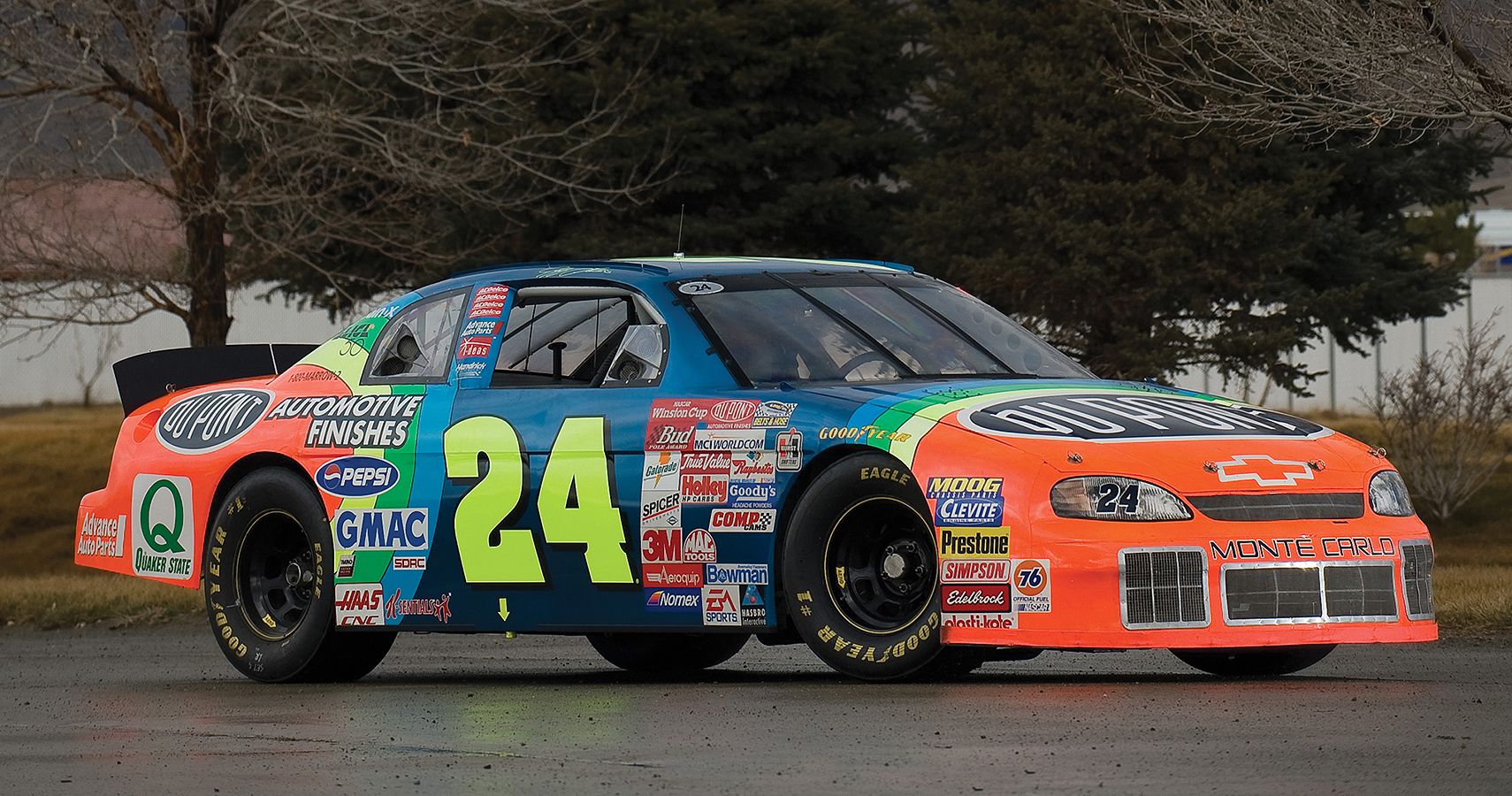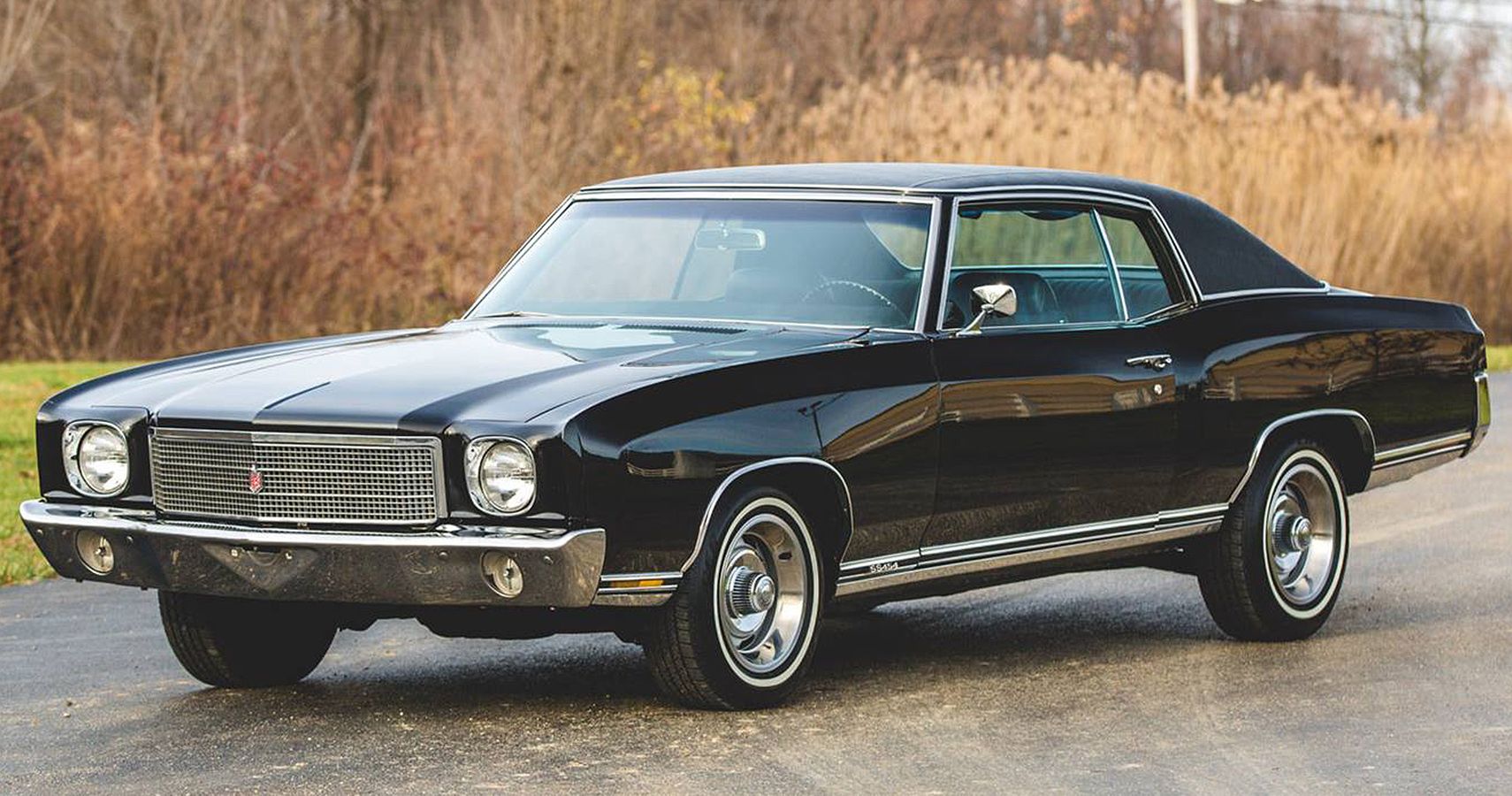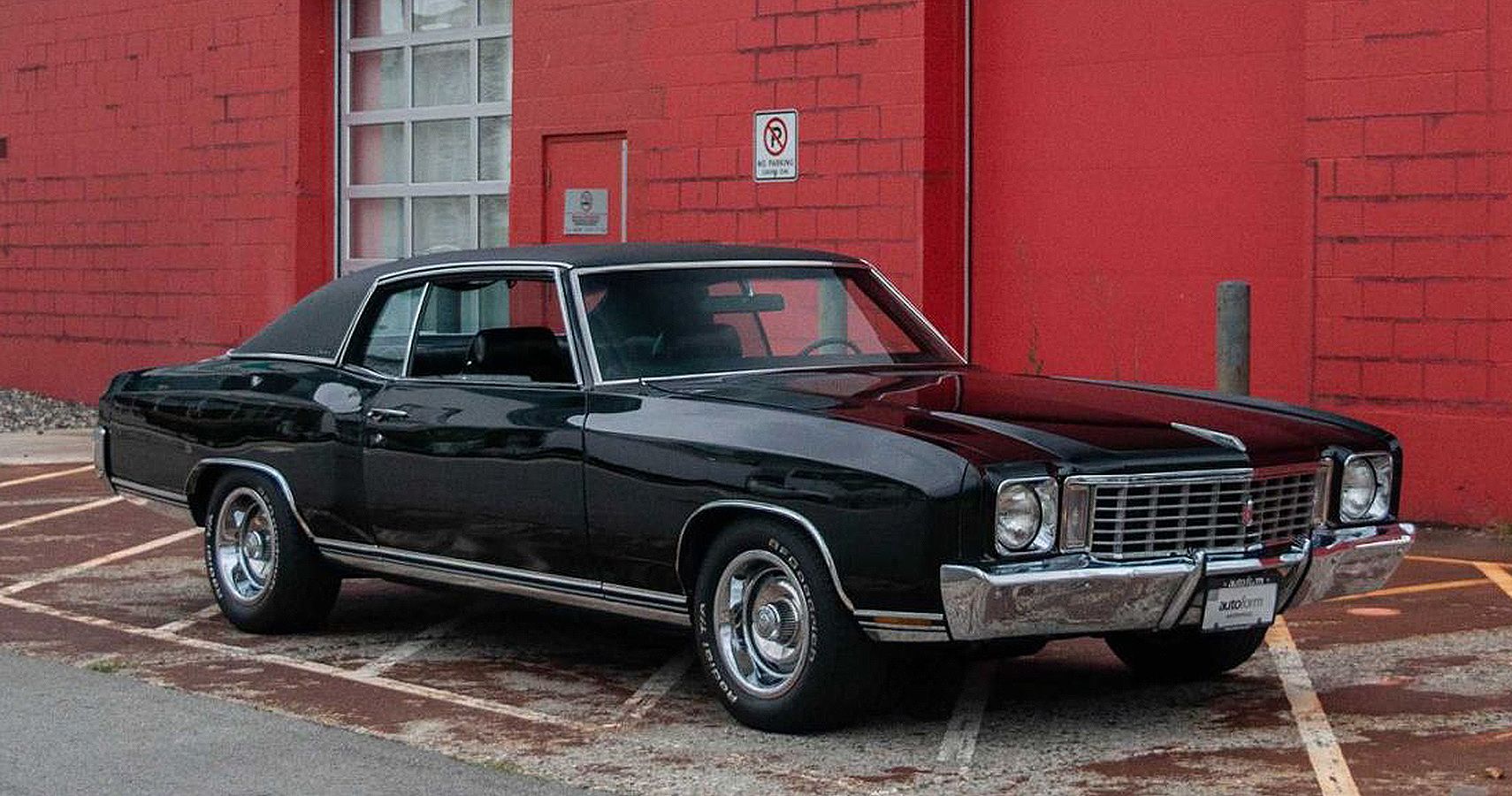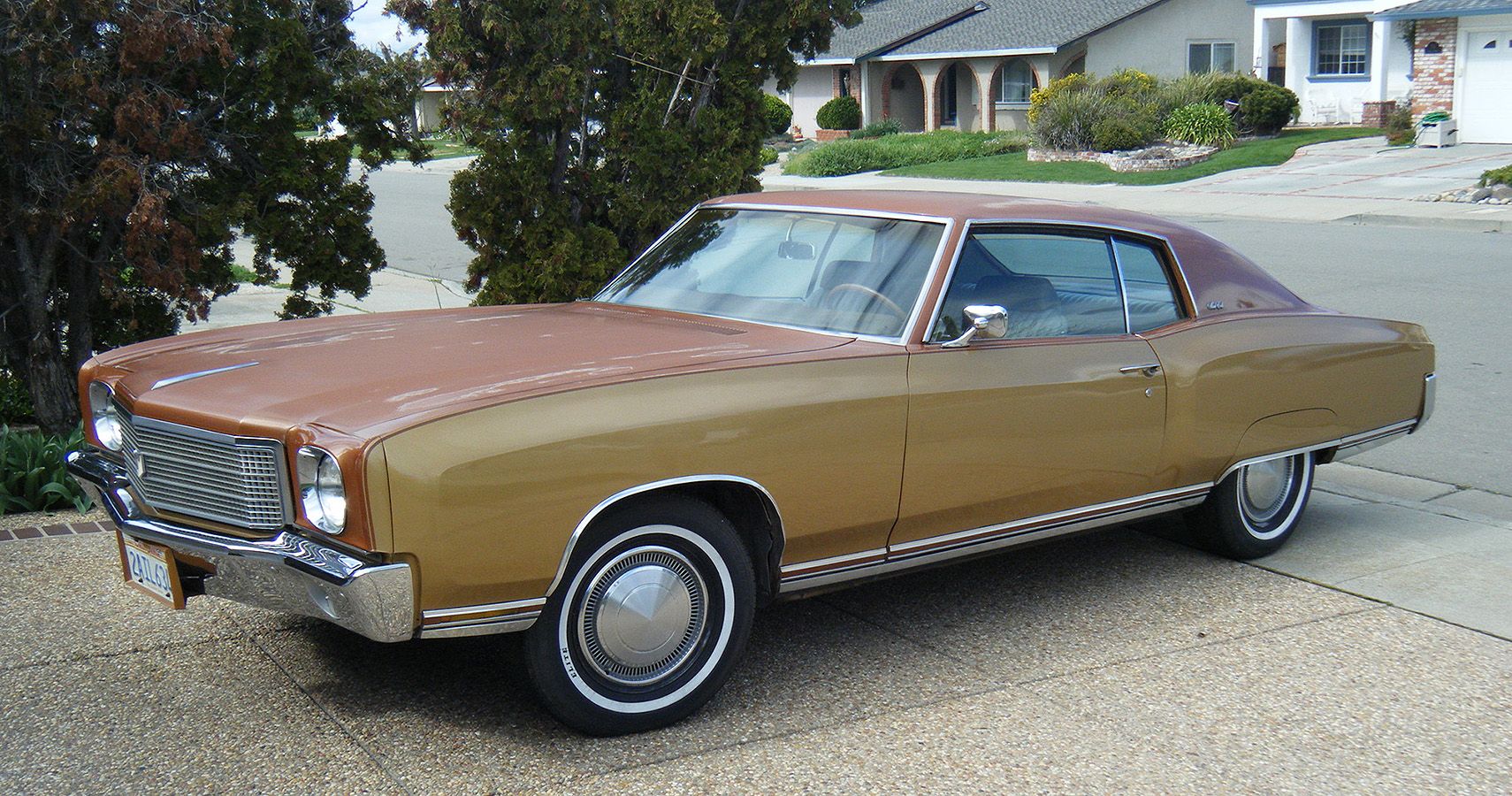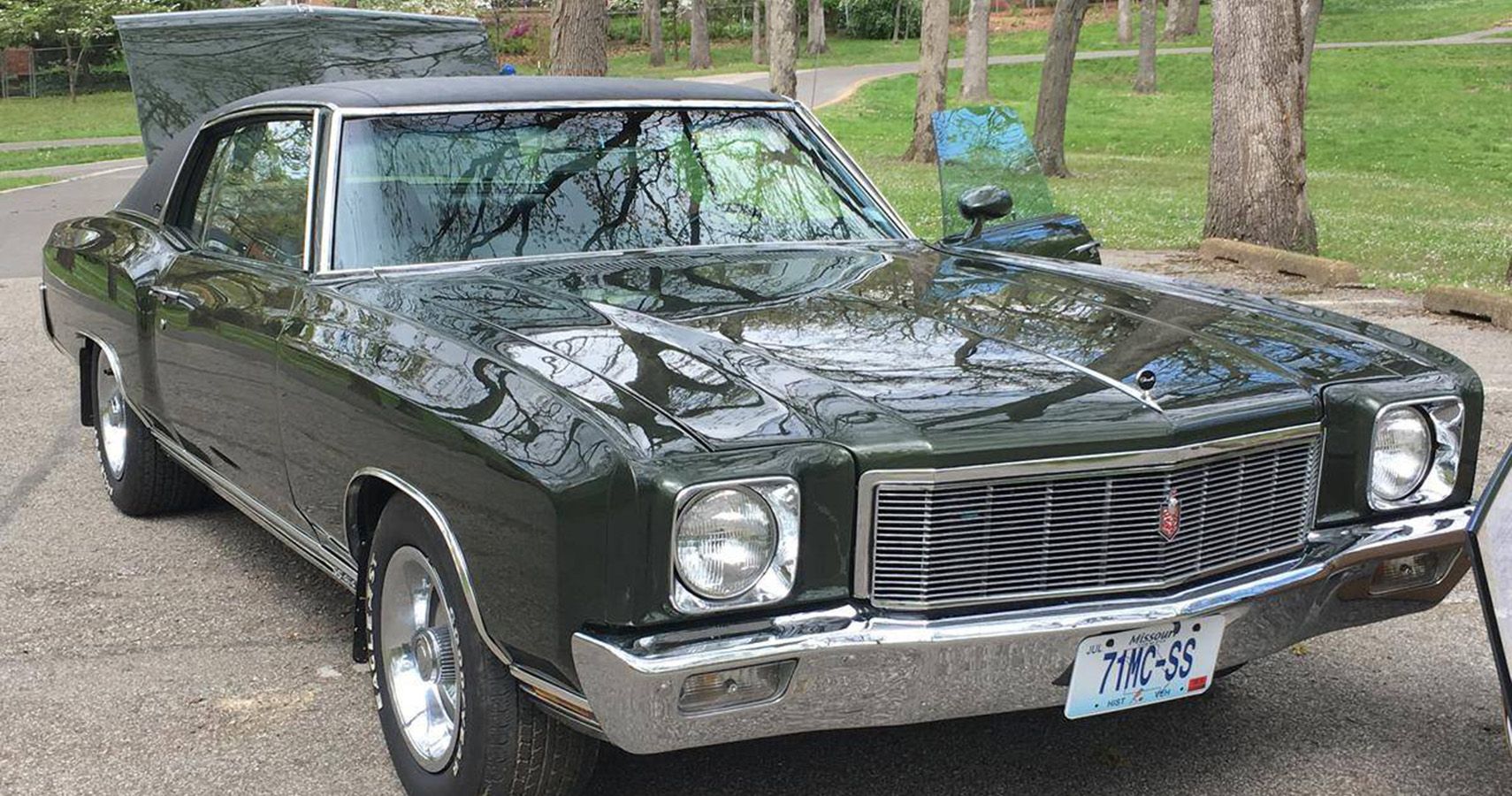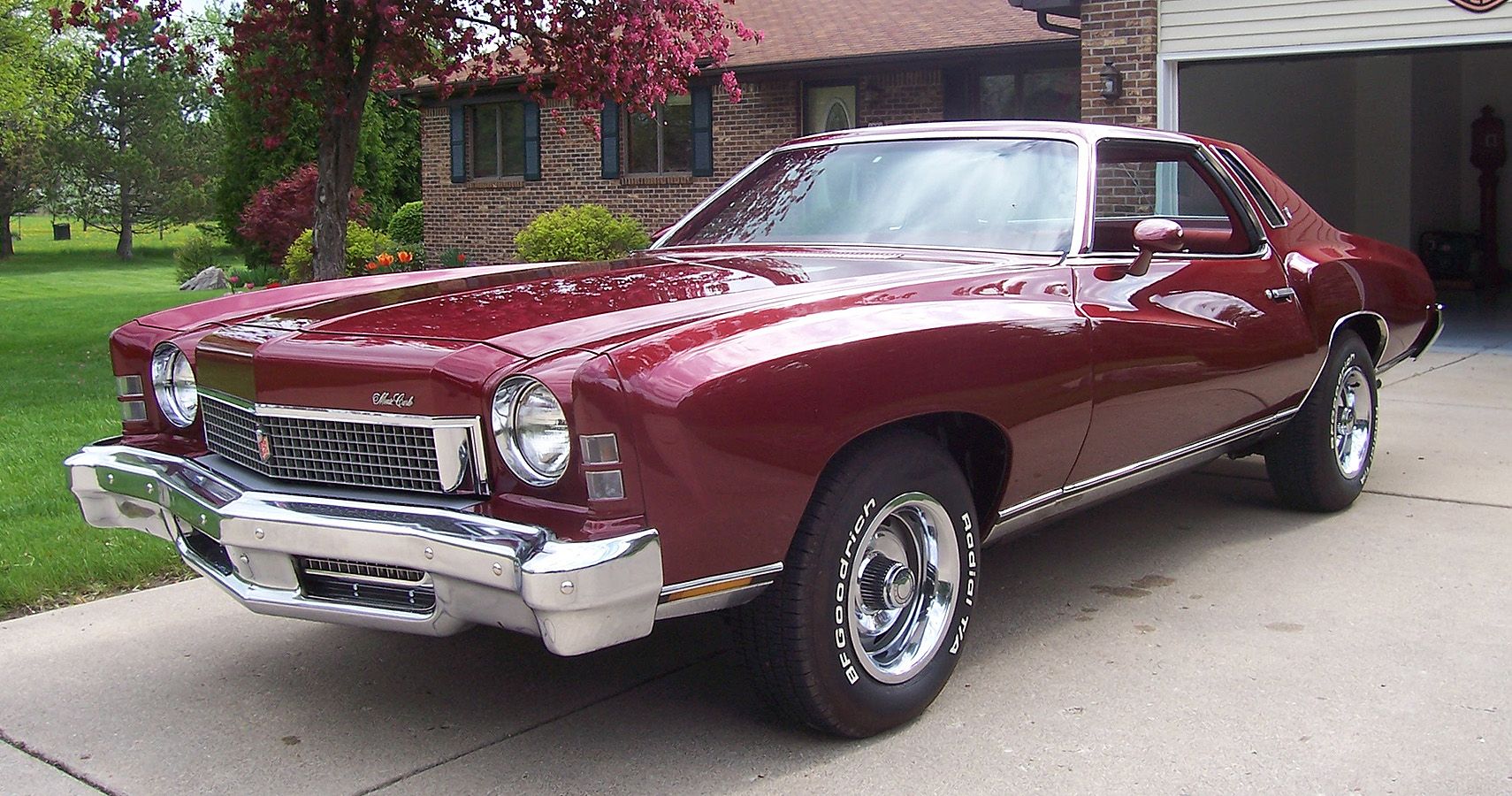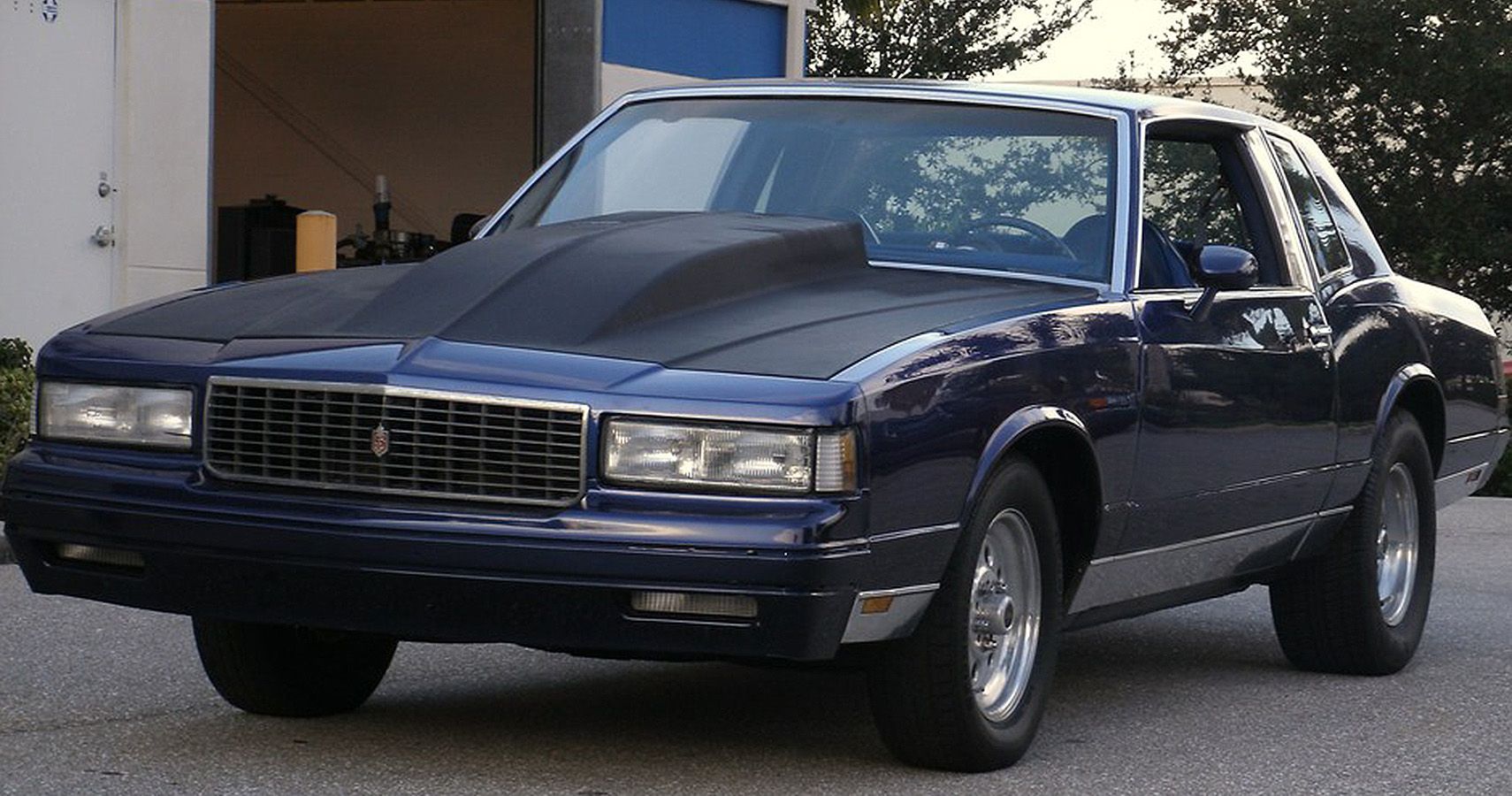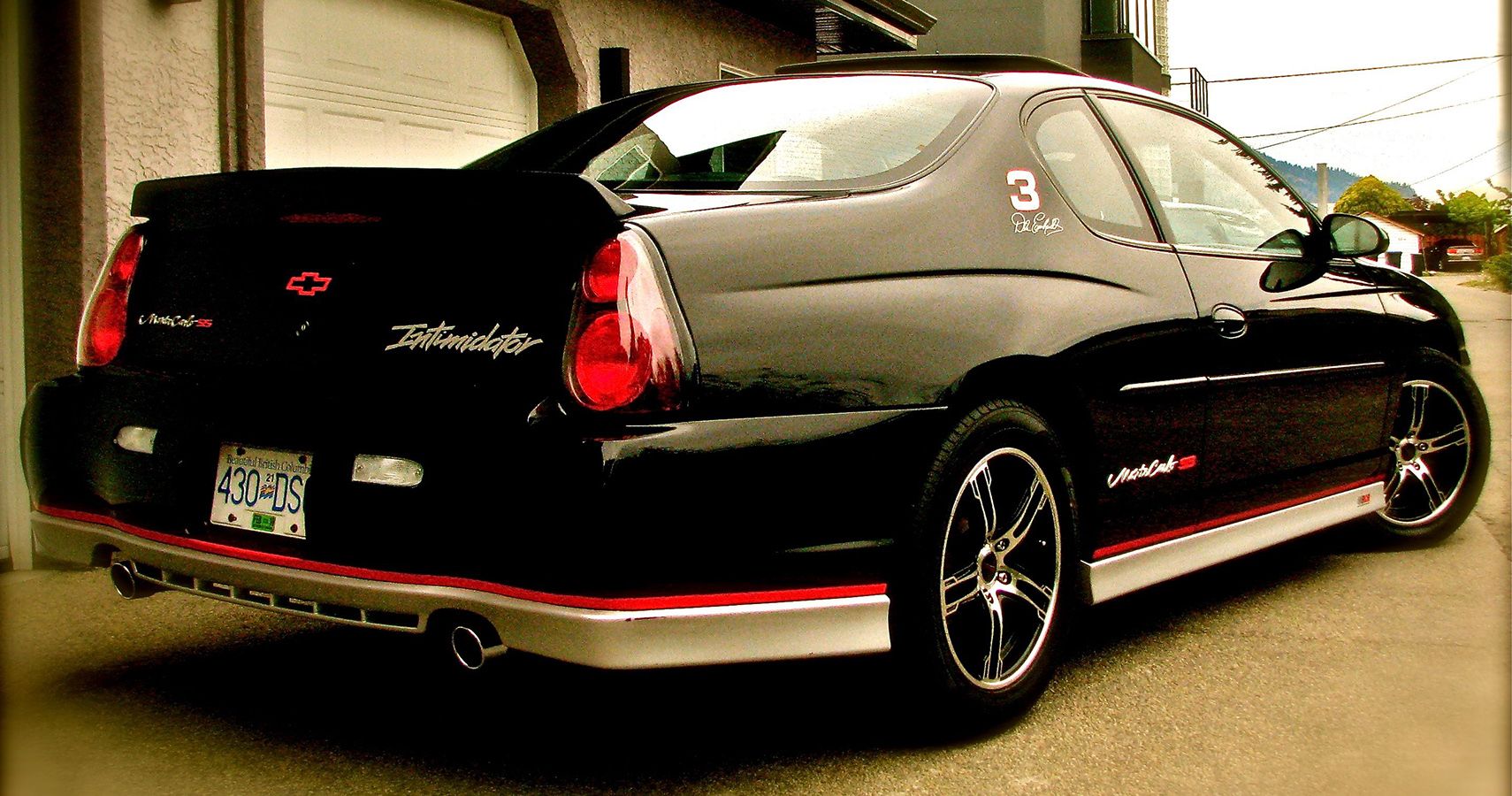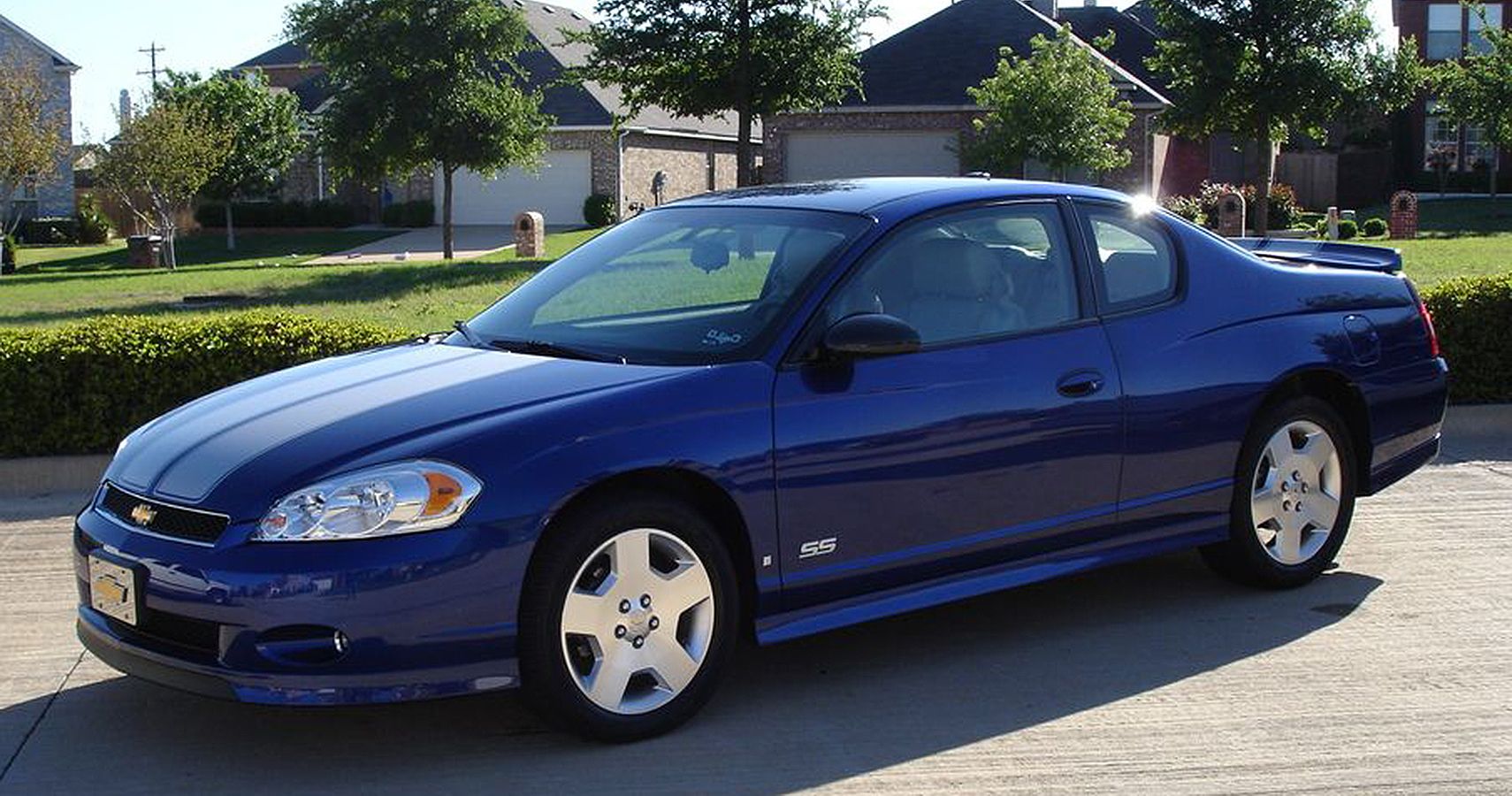Chevrolet Monte Carlo has been different things at different times but was undoubtedly one of the most iconic nameplates that Chevrolet ever came up with. Named after the city of Monte Carlo of the Principality of Monaco, the name inspired luxury, dreams, and a life one could probably never afford. But at least one could afford the car, right?
It was formally introduced in 1969 and stayed on till 1987, post which it was retired. Revived in 1994, the nameplate was finally laid to rest in 2007. Is there a third coming? No word from Chevrolet as of now, and with sedans on low popularity, it does look a bit dicey. Here are ten things you may not have known about the Chevrolet Monte Carlo.
10 Based Off The Pontiac Grand Prix
In 1968, GM introduced strict wheelbase policies about sizing. But in 1969, they also launched the Pontiac Grand Prix, which was a lot longer than what A-body cars were supposed to be. This became known as the A-body special and later, the G-body.
The Monte Carlo was envisaged as the Chevrolet version of the Pontiac Grand Prix but was no rebadged model of its sibling. Design and visual cues were shared with the Chevrolet Chevelle while the styling was modeled, keeping the Cadillac El Dorado in mind. The 1969 Chevrolet Monte Carlo became the poor man’s El Dorado, considering it was priced lower.
9 Its Filename Was Concours
At the time, Chevrolet had a penchant for naming all of its sedans with a “C” – think Camaro, Corvette, Citation, Chevelle, Chevette, and so on. So Monte Carlo was quite the deviation from the line, though it came out later that the name on the file for the Monte Carlo was actually Concours.
Initially developed by Pete Estes, who was the Chevrolet de facto head at the time – the Monte Carlo was formally introduced by John DeLorean. In case the name seems familiar, yes, this was the guy behind the rise of the DMC DeLorean and its eventual fall. At the time of the Monte Carlo’s launch, DeLorean headed Chevrolet.
8 The 1970 Monte Carlo
Launched in 1969 as the 1970 model, the standard power mill of the Monte Carlo was the Chevrolet 5/7-liter “Turbo-Fire” small block V8. When paired with a two-barrel carburetor, it was good for 250 horses. With a four-barrel carburetor, the ponies were raised to 300. It was priced starting $3,123, a little above the Malibu.
Due to a factory strike, there were less than projected numbers of Monte Carlos made for the debut year – but in a way, this created even more demand for the car as it started to sell well. A nippy real-wheel-drive, the Monte Carlo offered great value for money and came with more engine options as well to please just about every pocket and need.
7 The All-Powerful SS454
We’ve seen this the SuperSport 454 tag on other Chevy and GM cars as well, and it was no less potent in the Monte Carlo. The Monte Carlo SS454 package was priced at $420 over and above the base price of the car – and while they weren’t many takers of it in 1970, 1971-72 were good sales years for it.
The engine was the 7.4-liter Turbo-Jet 454 and paired with a four-barrel carburetor, jetted a cool 360 horses. Better tires and suspension were included for the car to be able to take the road at high speeds, and it came with a three-speed automatic transmission.
6 Major Selling Point
The second-generation Monte Carlo debuted in 1973 and proved to be a whopper of a sales year for Chevrolet, with over 250,000 Monte Carlos leaving for happy homes and garages from the dealers. The looks of this model were more modern than the debut year’s, and buyers appreciated the Euro-styling of their favorite sedan.
Not to be outdone by 1973, 1974 sales went even higher to 300,000 plus – prompting other carmakers to join in the powerful sedan frenzy. Despite the Arab oil embargo and stricter emission norms, people continued to line up for the Monte Carlo. The full-sized sedan lasted till 1977, and the sales still were on a high with over 400,000 S and Landau Coupes being sold.
5 The 1978 Downsizing
Finally, GM had to toe the line and downsized all sedans and full-size cars to make them more gasoline and emission savvy. In 1978, the third generation of the Monte Carlo came into play, this time as a two-door coupe with ponies ranging from 125 to 160.
A far cry from the 360 horses of the 1971 Monte Carlo SS454 but the need of the day was for smaller cars that guzzled less gas and gave out fewer emissions. Sales did take a hit but at the time, Chevrolet was not overly concerned – every car company was taking a blow, and Chevrolet was no different.
4 The Fourth Generation Rests
In 1981, further restyling of the Monte Carlo took place to make it look smoother and in time with the times, so to speak. With the car market still reeling from the oil embargo and the emissions rules, engines had to be kept underpowered and so the fourth generation of the Monte Carlo could also not hold a candle to the power of the first and second generation.
By now, its glorious NASCAR run also came to an end, because this underpowered car could not compete with the bigger and better models on the circuit. From 60,000 produced in 1987 to 30,000 in 1988 – the Monte Carlo legacy wound to an end in 1988.
3 The 1995 Revival
Replaced by the Chevrolet Lumina at the end of the 80s, 1995 saw a revival of the Monte Carlo nameplate. However, it was more of a stand-in than a standalone car, with Lumina carrying on the sedan end of the business and Monte Carlo getting the coupe end.
For 1995, sales did manage to reach 100,000 as a glory call to what the Monte Carlo stood for, but this was only one year. From 1996 to 1999, sales were in the 60,000-70,000 ballpark figures, which may not be astronomical but worked to keep this nameplate alive and kicking. The Monte Carlo continued its roll.
2 The Retro Sixth Generation
2000 brought with it a fresher Monte Carlo, though this time it tried to hark its styling back to the time of its greatness. From 2000 to 2005, Chevrolet brought back the Impala nameplate for the sedan and kept the Monte Carlo nameplate for the coupe, retiring the Lumina nameplate.
This was also the time they launched plenty of Monte Carlo specials to celebrate racing greats. There was the 2002 Dale Earnhardt Signature / Intimidator edition; in 2003, it was the Jeff Gordon edition, and in 2004, it was Dale Jr edition. Each edition featured special engine and body styling replete with racing stripes and badges, and only a limited run of these models was made.
1 A Final Resting For The Monte Carlo
The 2006-2007 models of the Monte Carlo were the last and final of its life. Restyled as they were, Chevrolet retired the Monte Carlo nameplate citing that it may eat into the sales of the Chevrolet Camaro. It would be good to remember the greatness of the Monte Carlo in NASCAR as well.
It did exceedingly well for its first two generations though the dominant cars were from 1973 to 1977. The 1995 Monte Carlo also enjoyed race track success till 2007, post which it was replaced by the Impala and then finally the Camaro. A great performer, the classic car bazaar still hunts avidly for the rare forms of the Monte Carlo.

